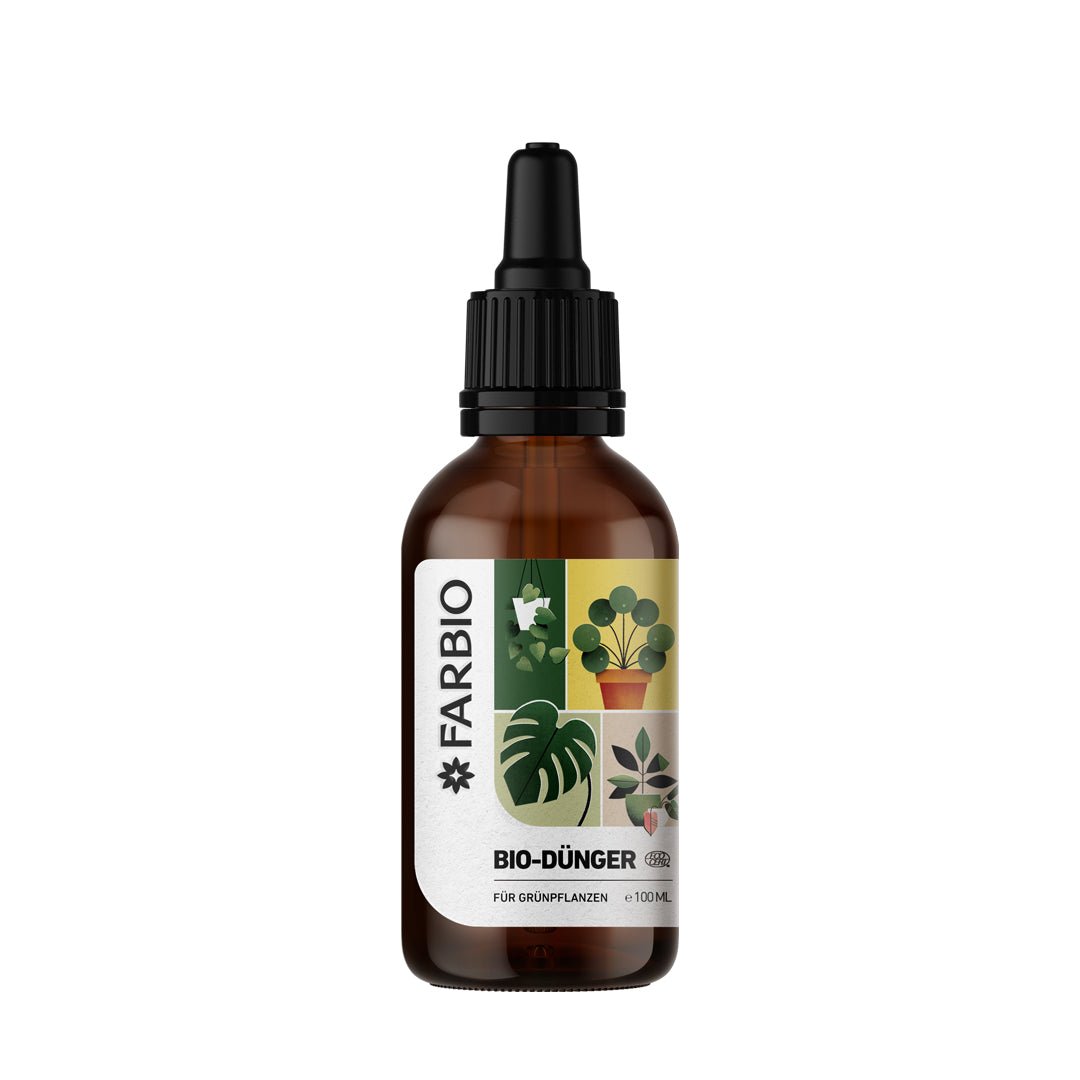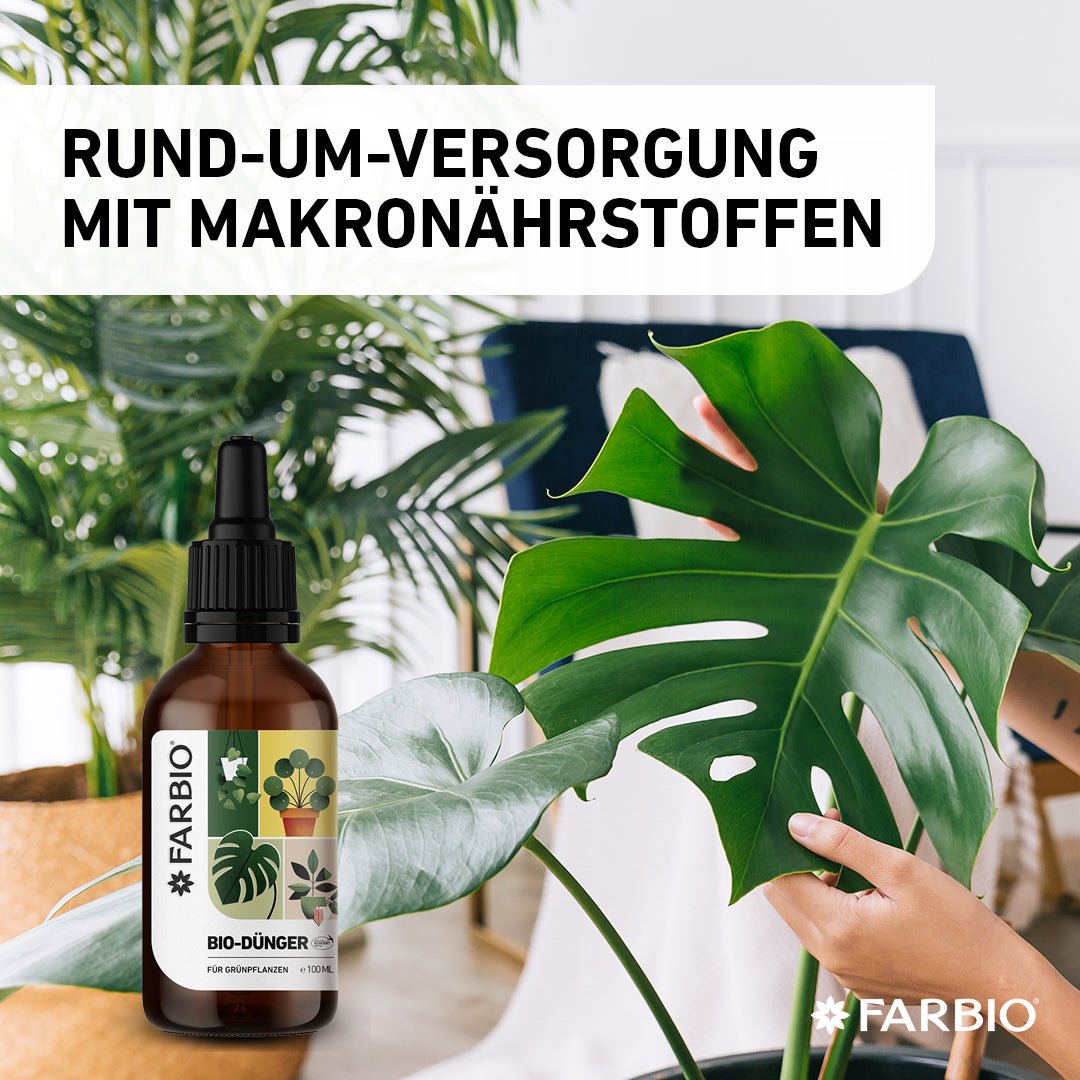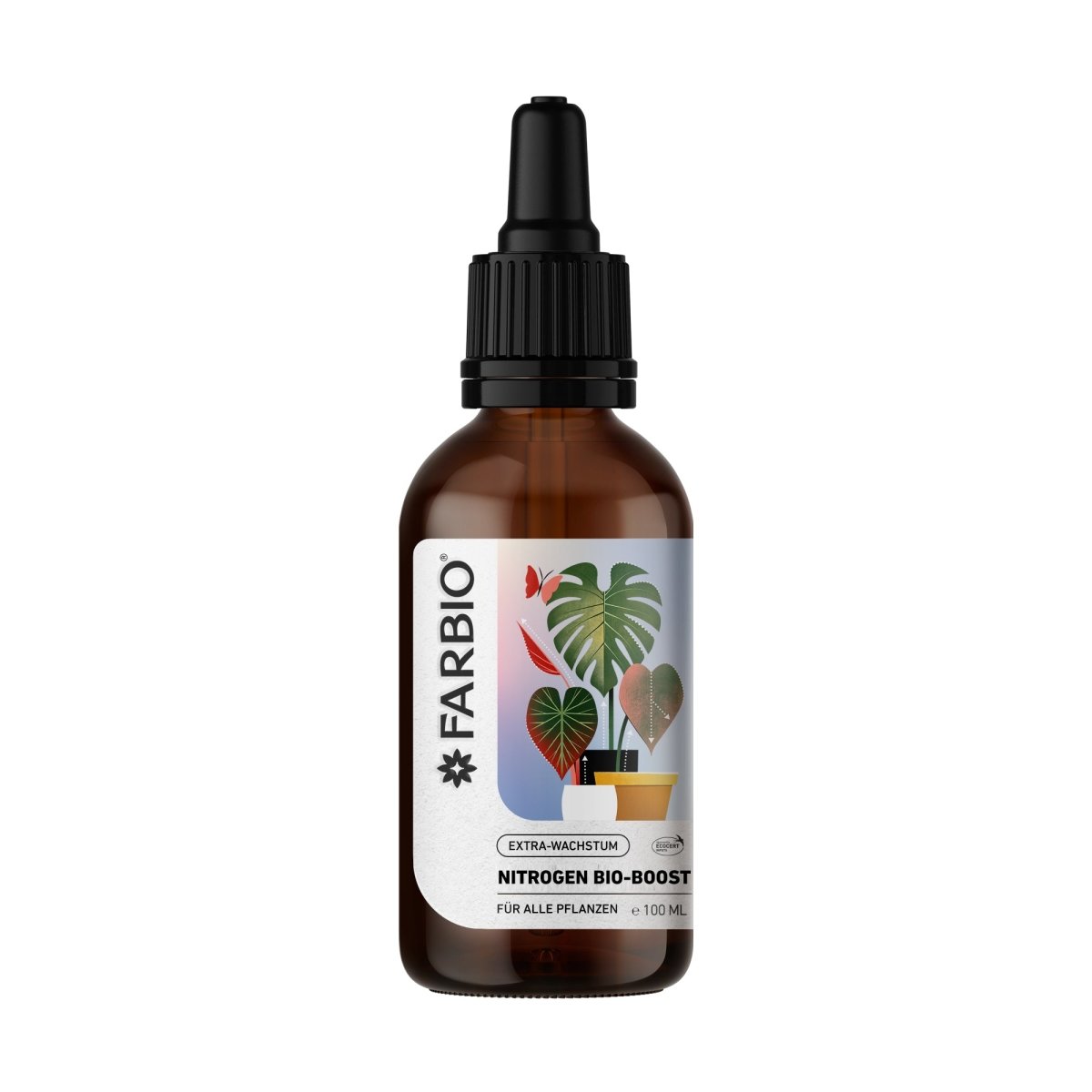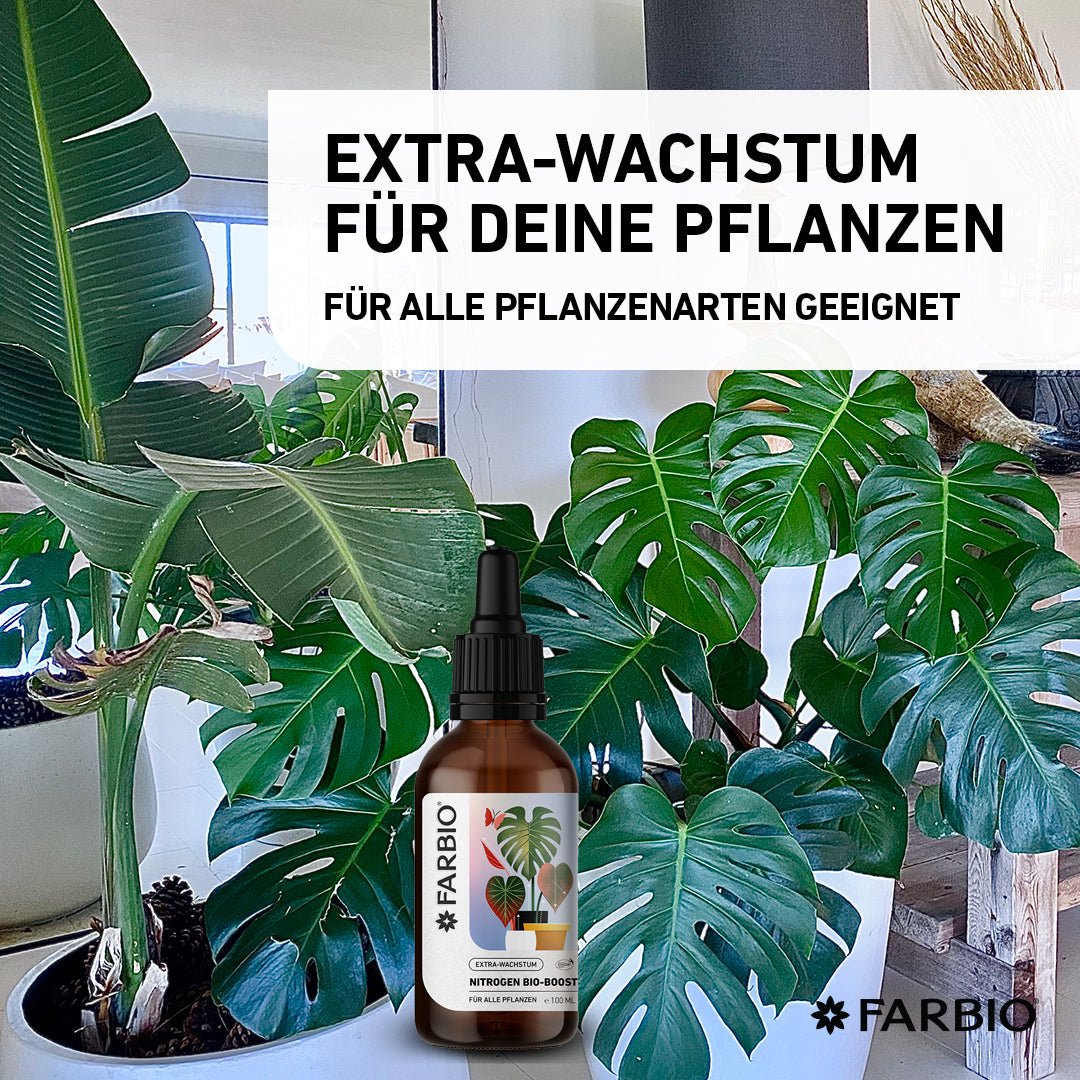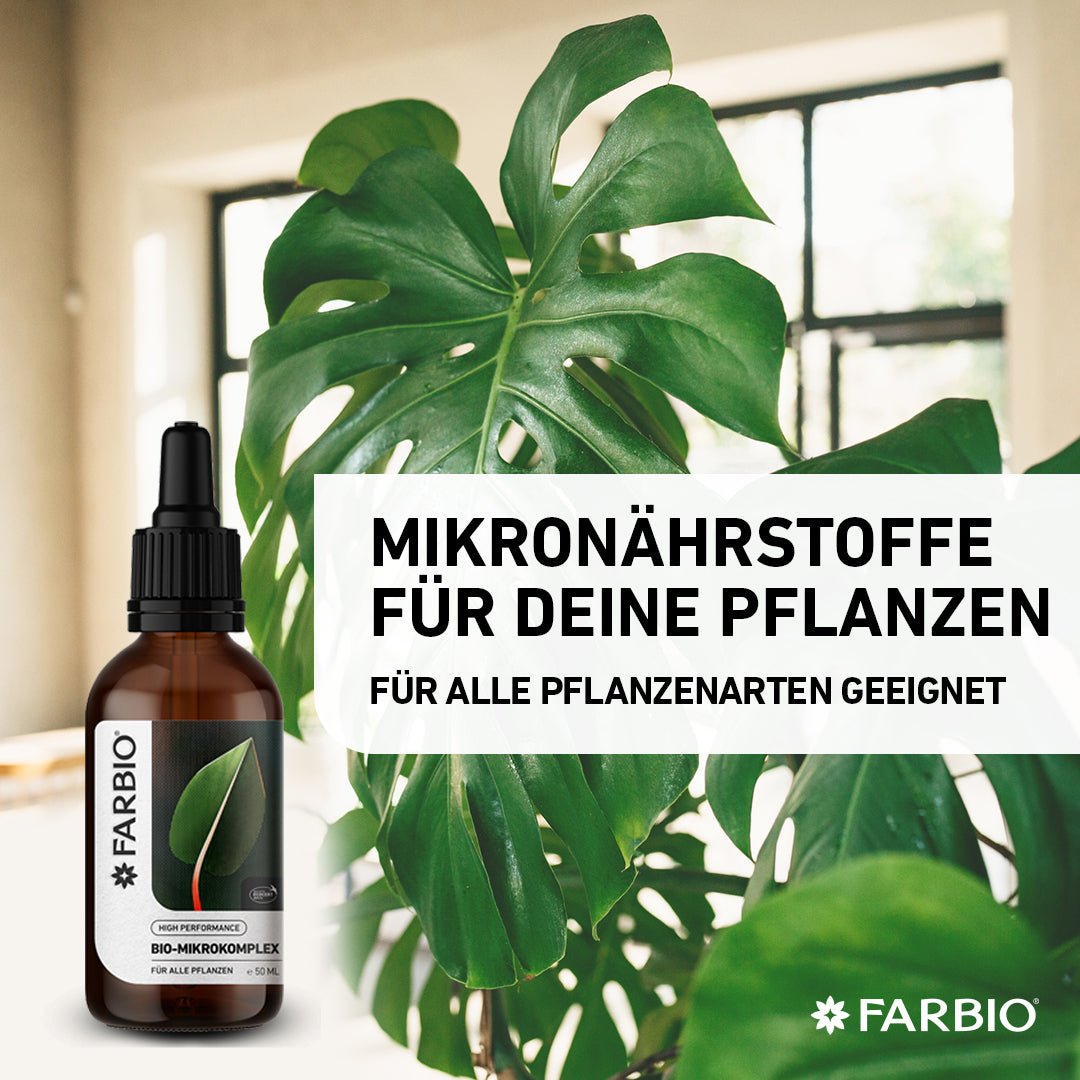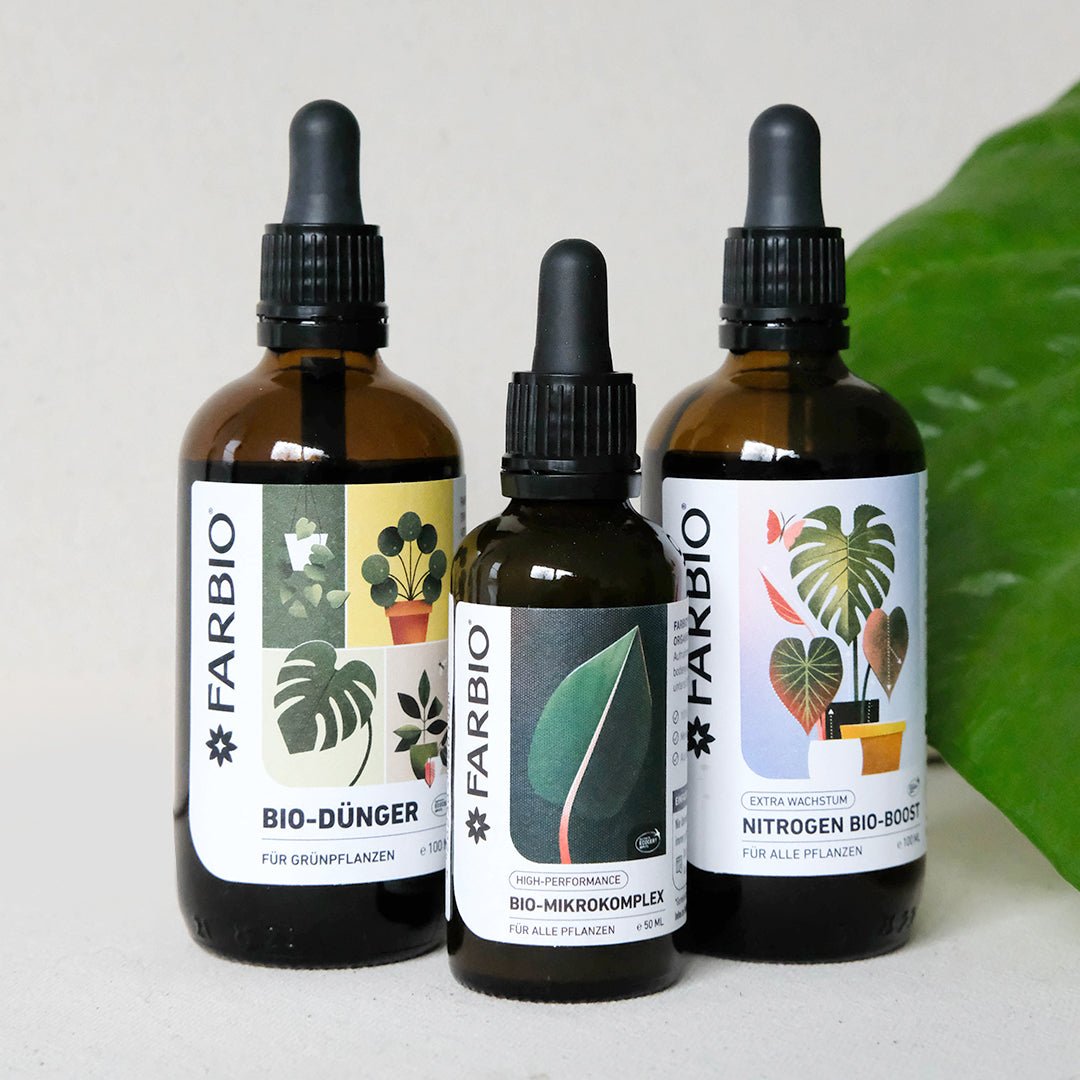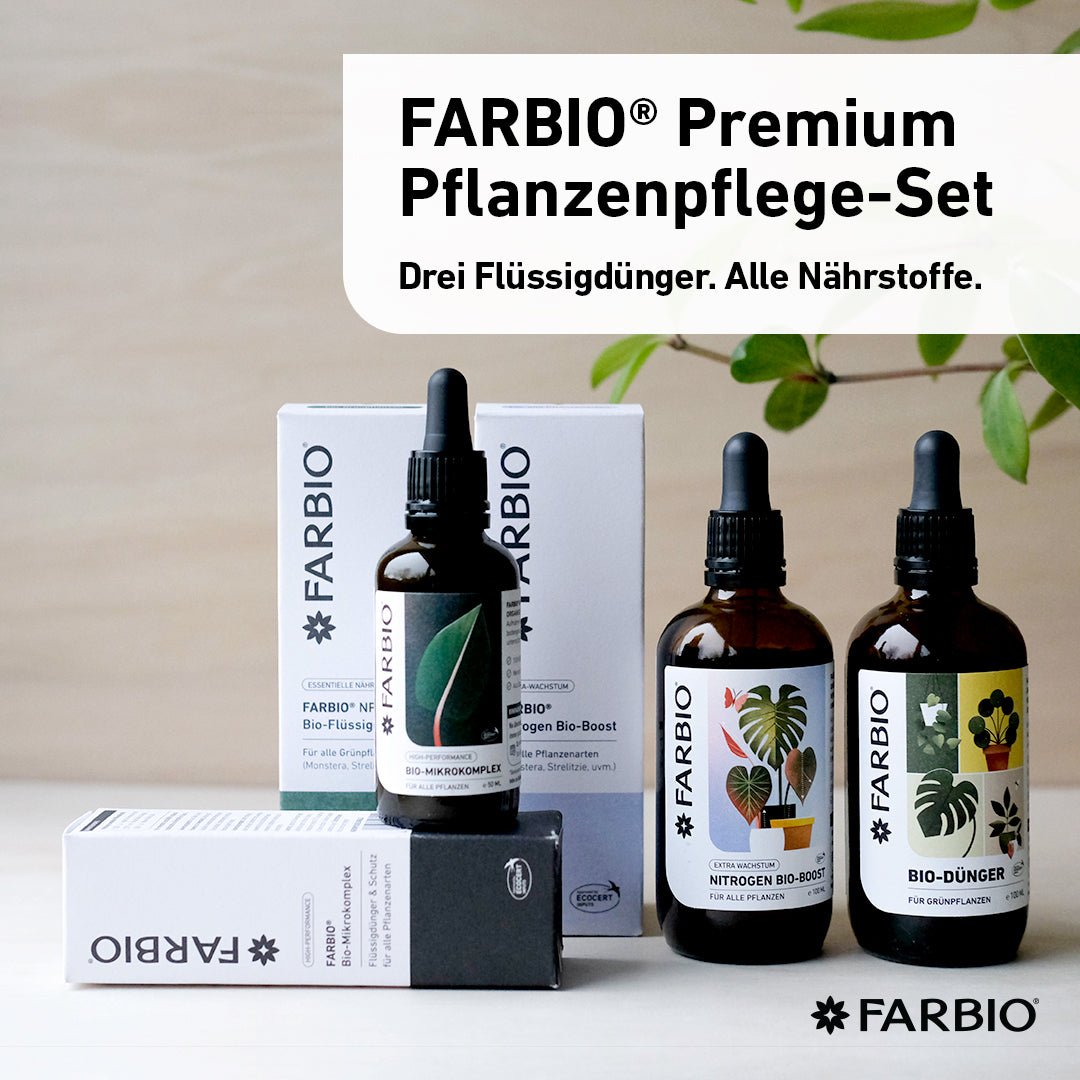Your houseplants are not only chic accessories in your home, but they are also like little green roommates. Fertilization plays a key role in ensuring that they really thrive in your four walls. Here you will find out why fertilizing is so important, how it supports the growth and health of your houseplants and how and when to properly fertilize your plant.
Nutrients: Why are they important for your plant?
Plants need main nutrients (macronutrients) and trace elements (micronutrients) in order to grow and develop healthily. Fertilizing is therefore an important process that ensures that your plants receive the nutrients they need and that are not present in sufficient quantities in the soil. It is important to know the nutrient requirements of your plants in order to enjoy them for a long time - you can find out more about the different nutrients here .

How often should your houseplants be fertilized?
Most houseplants (green plants) benefit from fertilizer every two weeks during the spring and summer growing seasons. In autumn and winter, monthly fertilization is usually sufficient. The application is usually very uncomplicated: it is simply added to the irrigation water.
What you need to consider when fertilizing houseplants
It's important to know the specific needs of your houseplants. Plants in a warmer environment or with higher light requirements may need more fertilizer. Certain plant species may also require additional fertilization during flowering or fruit formation. The correct application of fertilizers is also a key aspect of successful plant care. You can find out more about fertilizing in this video .
When should your houseplants be fertilized?
Fertilization should be worth considering when purchasing a plant. In general, of course, you should fertilize less in the cold season and immediately after repotting - then you can wait until spring to fertilize. But then your plant gets more light and urgently needs more nitrogen, phosphorus and potassium (the three main nutrients) for its growth.
Deficiency symptoms in houseplants
Yellow leaves, poor growth, and green leaf veins can be signs that your houseplants need more nutrients. Looking at the leaves can help identify the deficiency. Here you will find an overview of all possible nutrient deficiencies !

Should you fertilize after repotting?
There is no need to start using fertilizer in the first 4 weeks after repotting your houseplant. The soil is usually pre-fertilized - exceptions are some coconut soil and self-mixed substrate . You can start straight away with a fertilizer routine.

Is fertilizing houseplants also necessary in winter?
In winter, many houseplants slow down their activity because they get less light. This reduces their nutrient requirements. Reduced fertilization is recommended during this time. Some plants don't need any fertilizer at all, others only need a minimal amount. Observe the behavior of your houseplants in winter and adjust fertilization accordingly. If you use a grow light , you will need to fertilize continuously even in winter.
Which fertilizer is the right one?
What type of fertilizer is there for your plant and how do you decide between long-term fertilizer, special fertilizer, home remedies and the like? Production and composition play an important role in the decision.
Organic vs. mineral fertilizers for houseplants
Organic fertilizers are based on natural substances. They can have a positive effect on the soil by promoting the soil structure and thus good water balance, aeration and the activity of useful soil microorganisms. Mineral fertilizers are produced synthetically. This allows for more precise control of nutrient composition, but is not particularly sustainable as it requires a lot of energy to produce.
By using natural fertilizers (and peat-free soil ), houseplants can be cultivated sustainably.
Liquid fertilizer vs. fertilizer sticks
There are different fertilizers: liquid fertilizer is quickly available and easy to use, while solid fertilizer provides long-term nutrients. If you put fertilizer sticks in the pot, you need to water well so that the nutrients are released and reach the roots. Methods have their advantages and disadvantages. Liquid fertilizer is well suited for houseplants, especially if they are already showing signs of deficiency.
Foliar fertilization is a quick and simple form of liquid fertilization and supplements the nutrient supply to the plants via the roots. Our FARBIO® leaf fertilizers are simply mixed with water in a spray bottle and sprayed onto the entire leaf surface. They provide the plants with targeted nutrients that they can immediately absorb and utilize through the leaves.

Fertilizers should contain these important nutrients and trace elements
Different houseplants have different needs in terms of nutrient composition. Flowering plants often need a fertilizer with a higher phosphorus content, while green plants benefit from a higher nitrogen content during the growth phase. The use of organic fertilizers not only meets these special needs, but also promotes soil health.
Organic fertilizers often contain a variety of micronutrients that are important for plant growth. This can help maintain a balanced nutrient ratio in the soil.
With our FARBIO® organic microcomplex, the focus is on protecting your plants. Essential micronutrients such as copper ensure that plants become more vital and resistant to pests and diseases!
Tips for fertilizing your houseplants
Fertilizing houseplants properly can sometimes be a challenge! Here are a few tips to ensure nothing goes wrong.
How to dose fertilizer correctly - with a pipette
The correct dosage is crucial to avoid over-fertilization. It's easy to do with a pipette and doesn't require sticky fingers.

Warning signs of over-fertilization
Overfertilization can result in yellow or brown leaves. Wavy leaves or dark, limp roots can also be signs. In addition, over-fertilized plants usually grow more slowly. If you notice signs, flush the soil thoroughly with water or repot the plant.
Organic fertilizers release nutrients slowly: This means the plants are supplied with nutrients more evenly over a longer period of time and the risk of over-fertilization is reduced.



